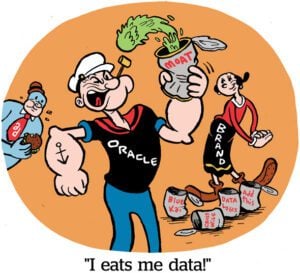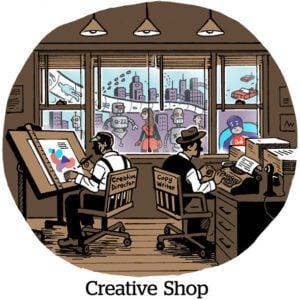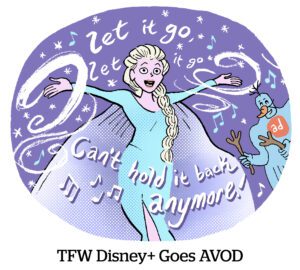Enthusiasm about video games is surging, but marketing budgets have yet to catch up to the hype.
Gaming ad spend is growing, but at a slower rate than other emerging channels. Video game ad revenue grew by 7% in 2022 compared to 2021, while CTV revenue grew by 32% and social media revenue grew by 16% in that same period, according to data from eMarketer.
Compared to other hot media channels like CTV and social, the budgets simply haven’t materialized yet because video games are still largely seen as an experimental channel.
“A lot of the brands that are procrastinating around getting into gaming are trying to find their organic, authentic fit within that community,” said Natrian Maxwell, GM of emerging channels at The Trade Desk, during a presentation at the IAB’s recent PlayFronts event. “We’ll see a lot more brands and agencies lean into the space once they feel comfortable.”
Spending disparities
In the US, video games rank third in how people spend their spare time. US audiences play video games 11.8 hours per week, compared to 12.1 hours on social media and 13.9 hours watching TV, according to Newzoo.
But a recent IAB study found that most brands and agencies spend less than 5% of their marketing budgets on video games. That disparity was a central theme at the IAB’s second annual PlayFronts, held last week in New York.
Throughout the two-day event, thought leaders from brands, agencies and tech vendors expressed optimism that the industry is finally waking up to the opportunity to reach mainstream audiences through video games. And marketers can now do so in a variety of ways, including through in-game ads and related activations, like esports sponsorships and influencer marketing.
US ad spend on video games totaled $8.6 billion in 2022, compared to $56.9 billion on social media, $67.2 billion on video, $68.4 billion on linear TV and $18.9 billion on CTV, according to eMarketer.
Half of agency respondents from IAB’s study said brands are more comfortable with traditional media like linear TV, which holds them back from committing to video game spending. Meanwhile, a third of brands said agencies aren’t pushing them to invest in gaming.
And as with most spending decisions this year, nearly all study participants cited economic uncertainty as a barrier to investments in innovation, which includes video game ad campaigns.
Perception gaps
Despite increasing awareness of gaming’s diverse global audience, the buy side still needs convincing about the value of video game audiences and the ease of activating campaigns in this channel.
IAB research found wide gulfs between buyer and seller perceptions about the cost of advertising in games, the quality of gaming inventory, the viability of gaming for driving performance, the ease of measuring ROI and brand safety.
Facilitating easier comparisons through measurement and analytics between video games and media channels that are perceived as more mainstream could be one way to bridge these gaps, said Phillip Lomax, EVP of business development at MediaScience, during a panel about the IAB’s study.
“The industry needs clear comparisons across advertising products and across platforms,” Lomax said. “By doing so, you will achieve specific budgets set out for gaming rather than still being stuck in the innovation bucket.”
Brand safety
Brand safety and suitability concerns about video games are major barriers for adoption since many games are violent.
But ad agencies at PlayFronts said concerns about violent content are overblown, especially when that isn’t a concern for other spending avenues.
“Is TV brand safe?” said Tommy Huthansel, VP and director of partnerships at Dentsu Gaming. “You could run a 30-second ad during Good Morning America, or you could run a 30-second ad during a Jeffrey Dahmer docuseries.”
In an amusing exchange from the PlayFronts event stage, The Trade Desk’s Maxwell shared with Bidstack CRO Jude O’Connor his love for looting missions in Call of Duty’s free-to-play Warzone DMZ mode. Maxwell pointed out there is ample opportunity for brands to advertise their products while players loot virtual stores for supplies, like placing in-store signage or offering power-ups for collecting their products.
“This is a high-value guy who works for The Trade Desk, has four kids, runs his household, and he’s talking about how he’s playing Call of Duty, looting grocery stores,” O’Connor said. “This is the guy you’re missing.”
Premium inventory
Many advertisers are waiting for in-game advertising to break into console and PC games before they ramp up their investments, said Jonathan Stringfield, VP of global business research and marketing at Activision Blizzard Media.
But the idea that premium inventory is only available on consoles and PCs is inherently flawed, he said. “The gaming industry in general is moving increasingly mobile.”
Activision Blizzard, for example, has launched mobile titles based on its most popular IP, like Call of Duty and Diablo. It also owns mobile gaming juggernaut Candy Crush.
When gamers think of what constitutes a premium game, they focus mostly on factors like high-quality graphics, challenging gameplay, the ability to level up and customize a character over time and continuous upgrades and support from the game developer.
Marketers, on the other hand, place too much emphasis on where the game is played. But it’s a false dichotomy to think of mobile gamers and PC and console gamers as separate audiences, because they overlap.
About 72% of US gamers play on multiple platforms, according to Activision Blizzard’s research. And the mobile audience is the largest, with 84% playing at least once a week compared to 61% on console and 42% on PC.
“The mobile gaming audience is bigger than the PC and console audience combined,” Stringfield said. “If you’re looking for PC and console players, you might actually have an easier time finding them on mobile.”












